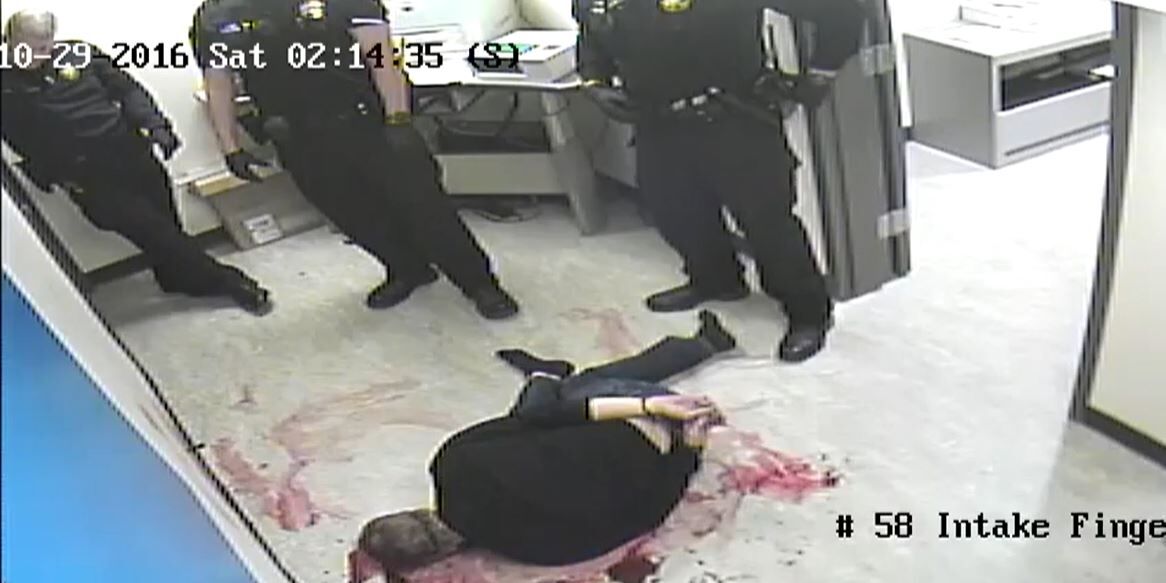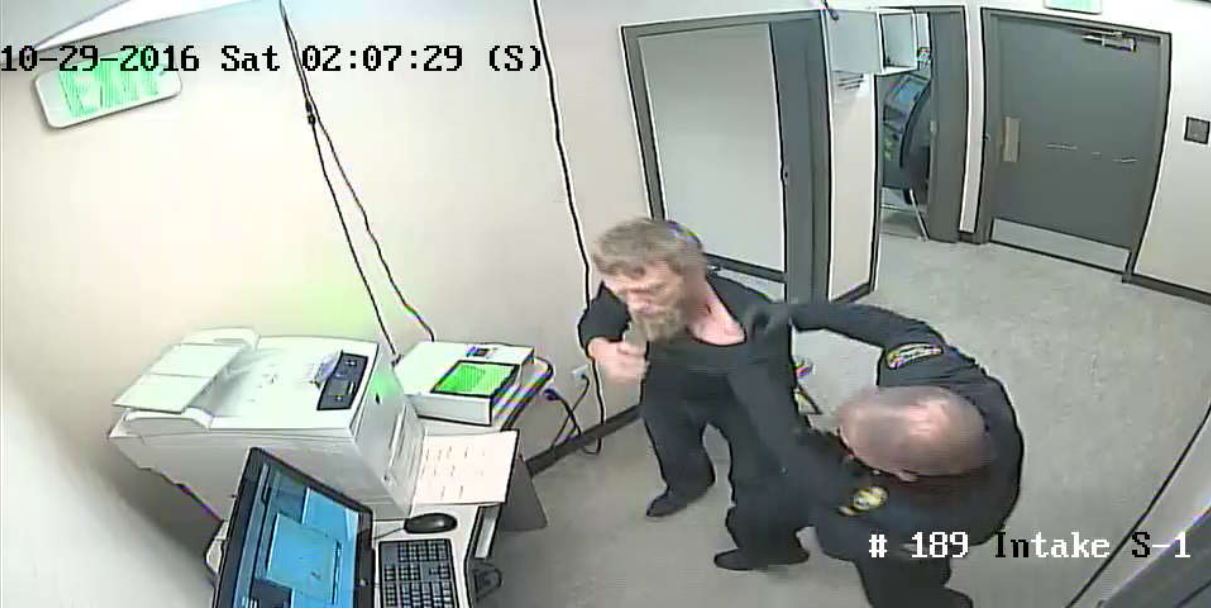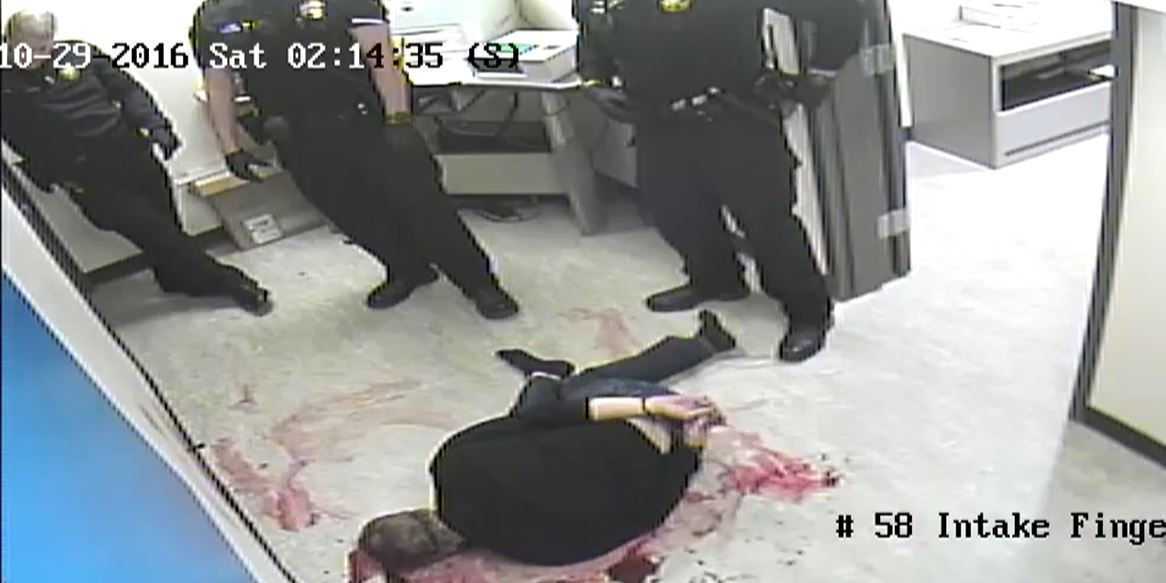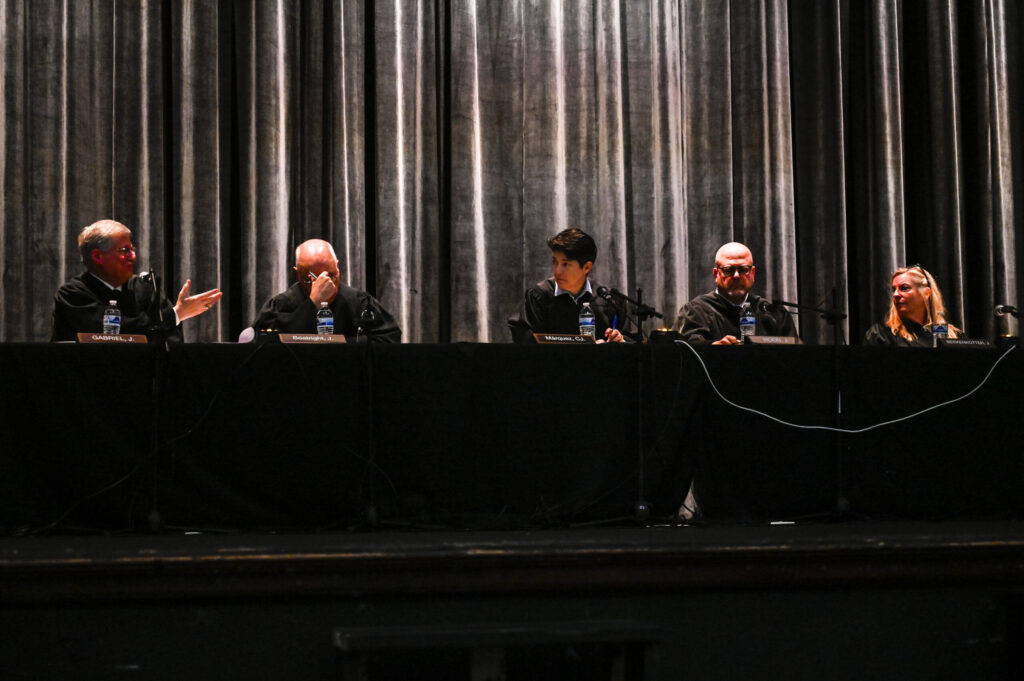10th Circuit says Clear Creek deputy who slammed detainee’s head is entitled to immunity

The federal appeals court based in Denver has agreed an ex-Clear Creek County sheriff’s deputy did not violate a detainee’s constitutional rights by slamming his head into a metal doorframe, leading to an apparent seizure and profuse bleeding.
Deputy Michael Hansen was in the process of fingerprinting Eric Magne during the early morning hours of Oct. 29, 2016. Magne, arrested on suspicion of drunk driving, spent several seconds rubbing the patch on Hansen’s uniform, allegedly to wipe away his inadvertent spittle. It was when Magne moved his hand toward Hansen’s neck that the deputy used an arm bar takedown on him.
Magne argued in court that a jury should get to evaluate Hansen’s claim that he was responding to Magne’s “assaultive” behavior. But a three-judge panel of the U.S. Court of Appeals for the 10th Circuit believed Hansen had acted reasonably under the circumstances and could not be sued.
“Given the potential threat Magne posed,” wrote Senior Judge Bobby R. Baldock in a June 16 order, “the need for Hansen’s use of force was proportionate to the force he used.”
Georgetown police Officer Jon Geiger arrested Magne after a breath test indicated his blood alcohol level was nearly twice the legal limit. Magne was reportedly belligerent during intake, and eventually walked himself into the holding cell. Surveillance footage showed him close the metal door, but it did not latch shut. Magne repeatedly slammed the door, allegedly in an attempt to close it firmly.
Geiger then walked over from his desk, grabbed Magne and forced him against a wall for several seconds. The officer would eventually plead guilty to a misdemeanor for his use of force, with the district attorney saying Geiger had “lost his cool for no good reason.” Geiger is no longer a Georgetown police officer.
Approximately one hour after Geiger went hands-on with Magne, Hansen let Magne out of the holding cell to be fingerprinted. Uncuffed, Magne walked into the fingerprinting room with his hands above his head. Hansen told him he did not have to keep his hands in the air, but Magne reportedly wanted to show his compliance and avoid future force against him.
Surveillance footage from the fingerprinting room, without sound, showed Magne first holding his left arm in the air while Hansen fingerprinted his right hand. When Hansen switched hands, Magne fixated on the deputy’s shoulder patch, twisting himself slightly to rub the patch with his right hand.
Hansen claimed he told Magne to stop, but Magne disputed that. Instead, Magne maintained he was wiping his own spittle off of Hansen’s uniform.
“It was my understanding that’s aggravated assault if there’s spit on a cop and I’ve already had a bad enough night and I was afraid of that charge,” Magne said in a deposition. “I didn’t want to lose years of my life for something silly like that.”
The video then depicted Magne moving his hand to the front of Hansen’s uniform near Hansen’s neck. The deputy immediately grabbed Magne by the arm and swung him into the metal doorframe. The men fell to the ground, where blood began to pool around Magne’s head. Several seconds elapsed before other officers arrived to help handcuff Magne.
Magne then remained on the floor, twisting around in the blood. After approximately six minutes he appeared to convulse in an apparent seizure. The officers did not uncuff him, and later escorted him to an ambulance.

Nearly two years later, Magne filed a civil lawsuit accusing Hansen of violating his constitutional rights by using excessive force. He also sued Sheriff Rick Albers for the department’s training, which endorsed the use of the arm bar takedown.
The defendants moved to throw out the lawsuit based on qualified immunity, which shields government employees from civil liability unless they violate someone’s clearly established legal rights. In theory, qualified immunity protects officers who carry out their duties reasonably and are not on notice that their conduct is unlawful.
Although Hansen did not pursue criminal charges against Magne, he stated in a later deposition that Magne had touched his neck. An attorney asked Hansen whether he believed Magne was being “assaultive.”
“Yes,” replied Hansen, who is no longer with the sheriff’s office.
In July of last year, U.S. District Court Senior Judge John L. Kane agreed Hansen was entitled to qualified immunity. Hansen’s response to the touching, Kane wrote, was not “objectively unreasonable.” While it was true Magne suffered significant injuries and Hansen had not attempted to use lesser physical force, the judge found the degree of force reflected the potential threat.
“Having perceived Mr. Magne’s movements to indicate an intention to choke or otherwise assault him, it was not disproportionate for Deputy Hansen to respond with a takedown maneuver,” Kane wrote.
Magne appealed to the 10th Circuit, claiming a jury should get to decide whether Hansen truly acted out of fear for being assaulted, or if the deputy reacted excessively to a detainee who was merely annoying him.
“Magne was a routine DUI detainee who had not threatened anyone over the course of hours at the jail and whom his jailers felt perfectly safe and comfortable allowing to walk around unrestrained,” his lawyers wrote.
The 10th Circuit panel upheld Kane’s decision, finding the surveillance video clearly depicted Magne’s hand near Hansen’s neck. As such, the deputy’s perception of a threat was reasonable.
“Magne was impaired, if not still intoxicated, and he had grown increasingly disruptive. While he was unhandcuffed, he repeatedly touched Hansen for far longer than necessary to wipe away any spit,” Baldock wrote. “And reaching near Hansen’s neck and touching his uniform posed an obvious and serious threat to Hansen’s personal security. There also was a potential security threat to the jail posed by Magne, who was entirely unrestrained.”
Because Hansen had not committed a constitutional violation, there could be no claim against the sheriff himself for any failure to train, the panel added.
The case is Magne v. Albers et al.













